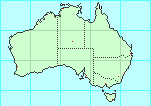 It is likely that non-adhesive eggs are randomly broadcast by the females.
It is likely that non-adhesive eggs are randomly broadcast by the females.
Note appearance of eggs. Note any common variations.

male macropterous, female brachypterous.
Adult male live 4 weeks - this is not uncommon for Phyllium spp. males. Adult male is 30 mm is length, elongate, black, resembling a wasp with long antennae. The adult males fly when disturbed. The tegmina and wings are shining black with a bluish overcast similar to some Hymenoptera and it may be a hymenopteran mimic.
The adults feed very little and remain motionless during the day unless disturbed.
The nymphs are broad and flat in appearance, yellow green in colour and very short antennae. Males and female nymphs are very similar.
 It is likely that non-adhesive eggs are randomly broadcast by the females.
It is likely that non-adhesive eggs are randomly broadcast by the females.
Note appearance of eggs.
Note any common variations.
Note typical vegetation, e.g. tropical rainforest, temperate rainforest, grasslands, alpine, etc.
 Rentz raised a nymph which was approximately 10 mm long when cptured,
instar unknown.
In captivity the individual had a strong tendency to move upward.
It preferred the young leaves of Pyracantha sp. (Rosaceae).
The nymph was kept in a plastic cylindrical cage with a wire screen
top, with ample Pyracantha sp. foliage and water was provided.
Temperature was maintained at 25°C and the lighting maintained on a 12
hour light, 12 hour dark regime. The food plants were positioned so
that they came into contact with the top of the cage to prevent the
nymph from inadvertently starving to death.
Rentz raised a nymph which was approximately 10 mm long when cptured,
instar unknown.
In captivity the individual had a strong tendency to move upward.
It preferred the young leaves of Pyracantha sp. (Rosaceae).
The nymph was kept in a plastic cylindrical cage with a wire screen
top, with ample Pyracantha sp. foliage and water was provided.
Temperature was maintained at 25°C and the lighting maintained on a 12
hour light, 12 hour dark regime. The food plants were positioned so
that they came into contact with the top of the cage to prevent the
nymph from inadvertently starving to death.
The nymphs moult at night, consuming the exuvium. Prior to moulting, the insects become sluggish and listless and do not feed.
For a stick insect with body length 55mm, to keep 2 adult females,
you need a cage at least 250mm high, 120mm deep and 120mm wide.
 Range:
Range: |
Copyright © 2000-2003
Peter Miller
This page was last changed 20-Sep-2006. |

|

|